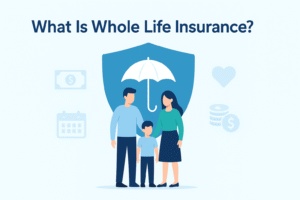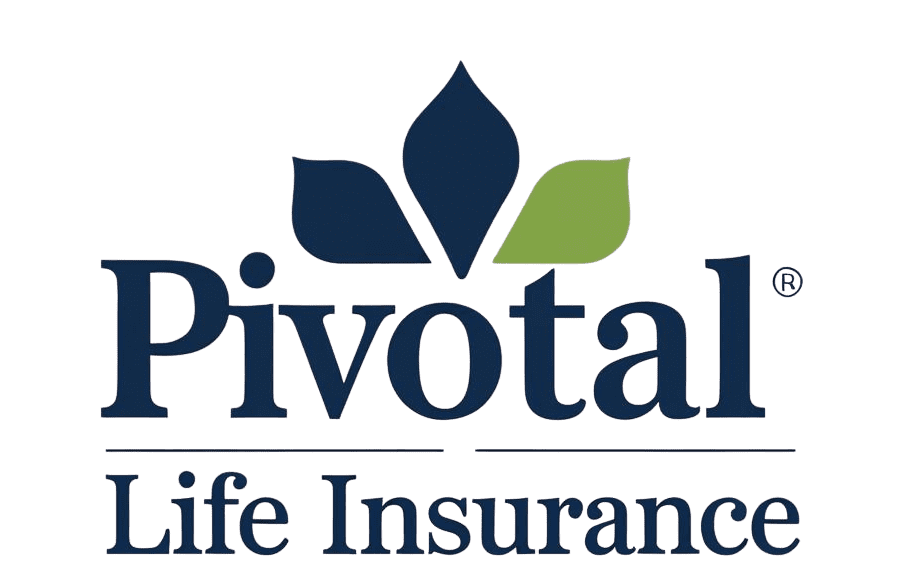Whole life insurance combines lifelong protection with a built-in savings component, making it a key pillar of financial planning for individuals and businesses alike.
In this article, we’ll explain what whole life insurance is, how it works, and why it matters. You’ll learn its core features, benefits, and trade-offs, as well as practical tips for both consumers and business owners.
By the end, you’ll understand why many financial experts call whole life insurance a foundational strategy for long-term security.
Key Takeaways
Whole life insurance provides lifetime coverage with a guaranteed death benefit. It never expires (if you keep paying premiums), unlike term policies.
A unique feature is the cash value component: premiums build a savings account that grows tax-deferred. You can access this money via loans or withdrawals later.
Premiums are fixed, so your costs won’t increase with age. This predictability is a major pro for long-term budgeting.
The death benefit is typically tax-free to beneficiaries, making it a powerful tool for wealth transfer.
For business owners, whole life can fund buy-sell agreements, insure key employees, and provide collateral for loans. It helps ensure a business can survive major losses.
Downsides include higher cost and slow cash value growth in early years. It’s important to weigh these against your goals.
When used appropriately, whole life insurance can be a pillar of financial security. High-income families, business owners, parents of dependents, and estate planners often find it valuable.
What Is Whole Life Insurance?

Whole life insurance is a form of permanent life insurance that provides coverage for the insured’s entire lifetime (as long as premiums are paid) and accumulates cash value.
In a whole life policy, part of each premium goes toward a death benefit (paid tax-free to beneficiaries) and part goes into a cash value savings account. The cash value grows at a guaranteed rate and is tax-deferred. Unlike term life insurance (which only covers a set number of years), whole life insurance “covers you for your whole life” and builds a savings component you can access later.
Lifelong coverage. Whole life policies are designed to remain in force until death, ensuring a guaranteed payout. NerdWallet explains that whole life “generally lasts your entire life” (often up to age 100) as long as you keep paying premiums.
Fixed premiums. The premium you pay is locked in at purchase and stays level throughout the policy term. This predictability makes budgeting easier.
Cash value savings. A portion of each premium is deposited into a cash value account. This account grows with interest (typically around 1–3.5% annually), and can be used by the policyholder.
Tax advantages. The cash value grows tax-deferred, and the death benefit is generally tax-free to beneficiaries. For example, Investopedia notes that cash value accrues on a tax-deferred basis and that death proceeds are typically non-taxable.
By covering the insured for life and accumulating a financial reserve, whole life insurance effectively acts as both an insurance policy and a forced savings plan.
Key Features of Whole Life Insurance
Guaranteed death benefit: Your beneficiaries receive a predetermined payout when you die. This amount is set in the policy and doesn’t change (unless you take loans that reduce it).
Cash value access: You can borrow or withdraw from the cash value account while alive. Experian notes you’re “entitled to access” the cash value through loans or withdrawals, essentially treating the policy like a low-interest loan or savings account.
Dividends (with mutual insurers): If the insurer is a mutual company, you may receive dividends based on the company’s performance. Those dividends can be taken as cash or used to boost the policy (e.g., purchase additional paid-up insurance). Dividends aren’t guaranteed, but they can increase cash value and death benefit.
Loan option without underwriting: If you borrow from the cash value, there’s no new credit check. Guardian explains that business-owned whole life policies allow borrowing at favorable rates (no credit application and usually lower interest). Note, unpaid loans reduce the death benefit dollar-for-dollar.
Tax-deferred growth: All cash value growth compounds tax-free. Guardian notes that any cash value is “tax-deferred, allowing the policy to compound more interest”.
Tax-free benefits: Typically, the death benefit passes to heirs tax-free. Investopedia confirms that death proceeds are “non-taxable to the beneficiary”.
These features make whole life insurance unique: it’s a permanent, predictable policy that doubles as an investment vehicle.
Whole Life vs. Term Life: Why Permanency Matters
Whole life insurance differs from term life in key ways. Term life provides coverage for a fixed period (e.g., 10, 20, 30 years) and is cheaper, but it has no cash value.
Whole life, on the other hand, offers lifetime coverage with a cash-value component. Because of this, whole life premiums are much higher. For example, NerdWallet reports that a $500,000 whole life policy for a healthy 40-year-old man might cost around $6,387 per year, versus only $334 for a 20-year term policy.
However, term life expires and can leave you uninsured later. Whole life guarantees coverage as long as premiums are paid. It also locks in premiums that won’t increase, while term premiums stay flat only for the term period.
In essence, term insurance is a low-cost, temporary solution, whereas whole life is a more expensive, but permanent solution that builds value over time.
Pros and Cons of Whole Life Insurance
Pros:
Lifetime protection: Provides coverage for life, so you never “run out” of insurance.
Predictable costs and benefits: Fixed premiums and guaranteed death benefit make planning easier.
Cash-value growth: A portion of each premium builds cash value you can borrow against tax-free. This is like a forced savings account with guaranteed returns.
Tax advantages: Cash value grows tax-deferred, and beneficiaries get a tax-free payout.
Cons:
High premiums: Significantly more expensive than term. NerdWallet notes whole life is “expensive” because of its permanent benefits. High premiums can strain budgets, especially when young.
Slow cash accumulation: In the early years, most premium covers the insurance cost, so the cash value grows slowly. It can take a decade or more to build substantial cash value.
Reduced death benefit on loans: Borrowing or withdrawing reduces the ultimate payout.
Complexity: Whole life policies can be complex to manage (dividends, riders, etc.). It’s important to understand terms like surrender charges and loan interest rates.
Overall, whole life insurance “isn’t the best choice for everyone,” NerdWallet cautions. Whether it’s worth it depends on your needs and resources.
Who Should Consider Whole Life Insurance?

Whole life insurance best fits those with long-term coverage needs and sufficient cash flow to handle higher premiums. NerdWallet suggests it may suit individuals who:
Have lifelong dependents or goals. Parents of special-needs children or lifelong caregivers often prefer whole life because it guarantees coverage no matter how long they live.
Are high-income earners. Wealthy individuals who’ve maxed out tax-advantaged retirement plans (like 401(k)s and IRAs) may use whole life as an additional tax-deferred savings vehicle. The cash value becomes an extra reserve or retirement supplement.
Plan for estate taxes. Those with large estates might use whole life to help heirs pay estate taxes. In 2025, estates above $13.99 million face federal tax, and a whole life death benefit can provide the cash needed.
Want guaranteed returns. Conservative savers who value guaranteed interest may appreciate that whole life’s cash value grows at a fixed rate, unlike investment-linked policies.
Ask yourself: What are your long-term financial goals? If you need everlasting coverage and an enforced savings mechanism, whole life can be a main pillar of your plan. If not, a combination of term life and other investments might be more cost-effective.
Whole Life Insurance for Business Owners

Whole life insurance isn’t just for personal protection — it’s a powerful tool in business planning. Business owners use whole life policies to safeguard continuity, facilitate succession, and provide financial flexibility. Key uses include:
Succession and buy-sell agreements. Companies often use whole life to fund buy-sell deals. For example, partners can insure each other so that if one dies, the survivor has cash to buy the deceased’s shares. Guardian notes that in partnerships, “each partner [may] want funds to buy out the other’s shares…as part of a written buy-sell agreement”. Experian similarly emphasizes that life insurance can give business partners the resources to transition ownership smoothly.
Key-person coverage. Whole life can insure critical employees or owners. Guardian explains that permanent life “builds cash value that the business can borrow against” for expenses if a key person dies. This provides a financial cushion to keep the business running while finding replacements.
Debt and expense coverage. A business can use policy proceeds to pay off loans, cover payroll, or meet operational costs if an owner or key employee passes away. Experian notes that having insurance “funds in place to pay bills, continue operations and transition to new leadership” could be “the difference between continuity and dissolution” of the company.
Employee benefits and retention. Some businesses offer life insurance as an executive benefit. The accumulating cash value of a company-owned policy can eventually supplement an owner’s retirement or fund bonuses. As the Guardian points out, if a policy’s insured is an owner or partner, its cash value can later function as a retirement benefit once the owner retires.
Example Scenario: Jane and Mark run a successful small business together. They take out whole life policies on each other for $1 million. If Jane dies unexpectedly, Mark will receive the proceeds. He uses some to buy Jane’s share of the company (per their buy-sell agreement) and the rest to cover business debts and keep the business afloat. Over time, part of each policy’s premium has built cash value that the company can borrow for growth or emergencies. This arrangement protects both the business and its families.
In summary, whole life insurance offers business owners a multi-purpose tool: it provides protection (through the death benefit) and a liquid asset (through cash value). Guardian highlights that permanent policies don’t expire and allow borrowing without a credit check, a major advantage for tight-knit businesses.
Cash Value and Tax Advantages

A distinctive feature of whole life insurance is its cash value accumulation, which grows on a tax-deferred basis. This means you won’t pay taxes on the growth as long as it stays in the policy. You can borrow from or withdraw this cash value (usually loans first), and those loans are typically not taxed as long as the policy remains in force.
The Guardian points out that borrowing against a permanent policy incurs no immediate tax, and interest rates are generally lower than bank loans.
Moreover, the policy’s death benefit passes to beneficiaries income-tax-free. Taken together, these tax features make whole life insurance an efficient vehicle for transferring wealth. (Of course, policy loans that aren’t repaid will reduce the eventual payout.)
Steps to Take and Common Questions
Assess your needs. Determine your coverage goals: Do you need lifetime protection, cash savings, or business continuity support?
Use online tools. Consider a life insurance needs calculator to estimate required coverage or consult a financial advisor for personalized advice.
Compare quotes. Whole life premiums vary by insurer. Shop around or work with an independent agent to find competitive rates and dividend histories.
Read the fine print. Understand policy details: Are there surrender charges (penalties for early cancellation)? What are the loan interest rates? Are dividends paid?
Integrate with your plan. Consider blending term and whole life if needed. As Experian suggests, many business owners use whole life for long-term needs (like buy-sell funding) and term life for short-term key-person coverage.
Common questions: You might wonder, “Is whole life insurance worth it?” The answer depends on your situation. NerdWallet notes it’s often chosen by those with specific needs (high income, lifelong dependents, estate planning). Many financial planners recommend term life for temporary needs and direct investment for savings, reserving whole life for strategic situations.
What’s your biggest financial goal? If lifelong protection and savings fit that goal, whole life insurance might be the key to building your financial foundation. Consider discussing your situation with a trusted financial professional.
Sources: Industry publications, insurer websites, and expert analyses
Whole Life Insurance: Definition, Pros and Cons — Investopedia
What Is Cash Value in Life Insurance? Explanation With Example — Investopedia
26 U.S. Code § 101: Certain Death Benefits — Cornell Law (LII)
26 CFR § 1.101-1: Exclusion from Gross Income of Proceeds of Life Insurance — Cornell Law (LII)
The Cost of Whole Life Insurance, and Why It’s So High — NerdWallet
Term Life vs. Whole Life Insurance: Key Differences — NerdWallet
How Life Insurance Can Help You Accumulate Cash for Your Family — Investopedia
The Retirement Strategy Many People Overlook—But Could Supercharge Your Savings — Investopedia
702(j) Retirement Plan: What It Means, How It Works — Investopedia
Life Insurance in a Qualified Retirement Plan — Investopedia

